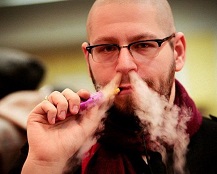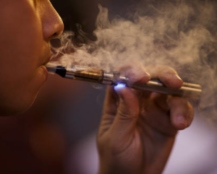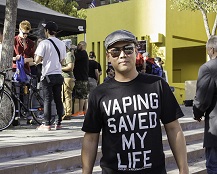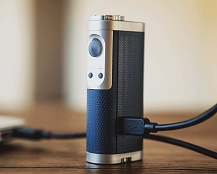If you find yourself in a debate as to whether e-cigs are just a passing fad, the first thing you need to do is empathize.
A briefing organized by the New Nicotine Alliance at the sixth Global Forum on Nicotine underlined the importance of flavors for the success of vaping, and called the logic of flavor bans - as currently being proposed across the US - arguing that they could cause more harm than good.
Flavored electronic cigarettes appeal to and are targeted toward adults. Just because we age does not mean we lose interest in the delectables of life. Flavored e-cigs undoubtedly taste better than tar-filled tobacco smoke and are a sincere attempt to keep health conscious smokers from falling off the vapor wagon.
If you’re wondering who made vaping popular in among Hollywood celebrities, the answer is Leonardo Dicaprio. This actor, producer,...
Could you vape your way to a fatal nicotine overdose? Bernd Mayer investigated the source of the claim and we now have his answer.
The California Department of Public Health’s Still Blowing Smoke campaign and the CDC’s tips campaign are just two of the latest examples of why tobacco harm reduction is so widely misunderstood by the public. But why is the anti-science, chemo-phobic propaganda winning the PR war over e-cigarettes?
In the event that a bystander would pass through the vapor, since it doesn't contain the irritating toxins of tobacco smoke, it would likely be barely detectable beyond the faint scent of the flavor and only for a fleeting moment.
We’ve spent plenty of time tackling anti-vaping myths since the site got started, but it isn’t just those opposed to vaping that often spout mistruths or plain misleading statements. In fact, there are quite a few pro-vaping myths that we should stop repeating if we want to be taken seriously.
The other day I was cleaning my garage and I stumbled onto a treasure trove. Or a clearomizer graveyard, whatever...
Naturally-extracted tobacco (NET) e-liquid is widely-recommended by those searching for the most realistic tobacco e-liquids, but results from e-liquid chemical and toxicological studies would suggest that they carry slightly greater risks than your average e-liquid. But is the added risk worthwhile? We take a look at the pros and cons of NET e-liquids.
The main improvements are likely to take the form of improved manufacturing processes – to keep things like the heavy metal content of vapor to an absolute minimum – but in some areas, e-cigs are still in need of some high-tech innovation. Here are the top five technologies we think e-cigs are missing.
Product standards, advertising and official public health support are just some of the things that separate the USA vape culture from the UK.
Do you think e-cigs pose a risk to bystanders? Studies have shown that the vapor of e-cigarettes is less harmful than the air you inhale on a regular basis.
The Merry E-Cigarette Vaping Christmas Game, by Brian Fojtik.
The worst thing about the continuous spread of misleading information and the manufacturing of misguided panics about vaping is the fact that e-cigarettes are really about harm reduction. Arguments like “e-cigarettes aren’t absolutely safe” are ridiculous in the context of harm reduction, and this becomes pretty clear when you apply common anti-vaping arguments to other forms of harm reduction.
The vaping community has been pretty successful in shattering various myths about e-cigarettes. There’s a ton of research out there...
October has seen the release of some great mods, including one from legendary manufacturer ProVape, and some notable dripping atomizers, RTAs and sub-ohm tanks, with plenty of innovative design decisions thrown into the mix along the way. So let’s look at what October had to bring.
The media feeds on negativity. A story about trace amounts of a carcinogen found in an electronic cigarette is much more likely to be covered extensively and disseminated into public knowledge than ones which show them to be no more dangerous than nicotine gum or patches.
The Huffington Post has uploaded a 24-minute video debate in response to Contra Costa County’s decision to ban vaping in no smoking areas. The move also means that any sellers have to obtain a tobacco retailer license in order to sell any e-cigs. This is a controversial move, since e-cigs are not smoking and release nowhere near the level of chemicals you’d find in a tobacco cigarette, but the fierce debate still rages on.
One of the most frequently cited “issues” with e-cigs is that they aren't currently FDA-approved and therefore must be either unsafe or ineffective for their chosen purpose.



















